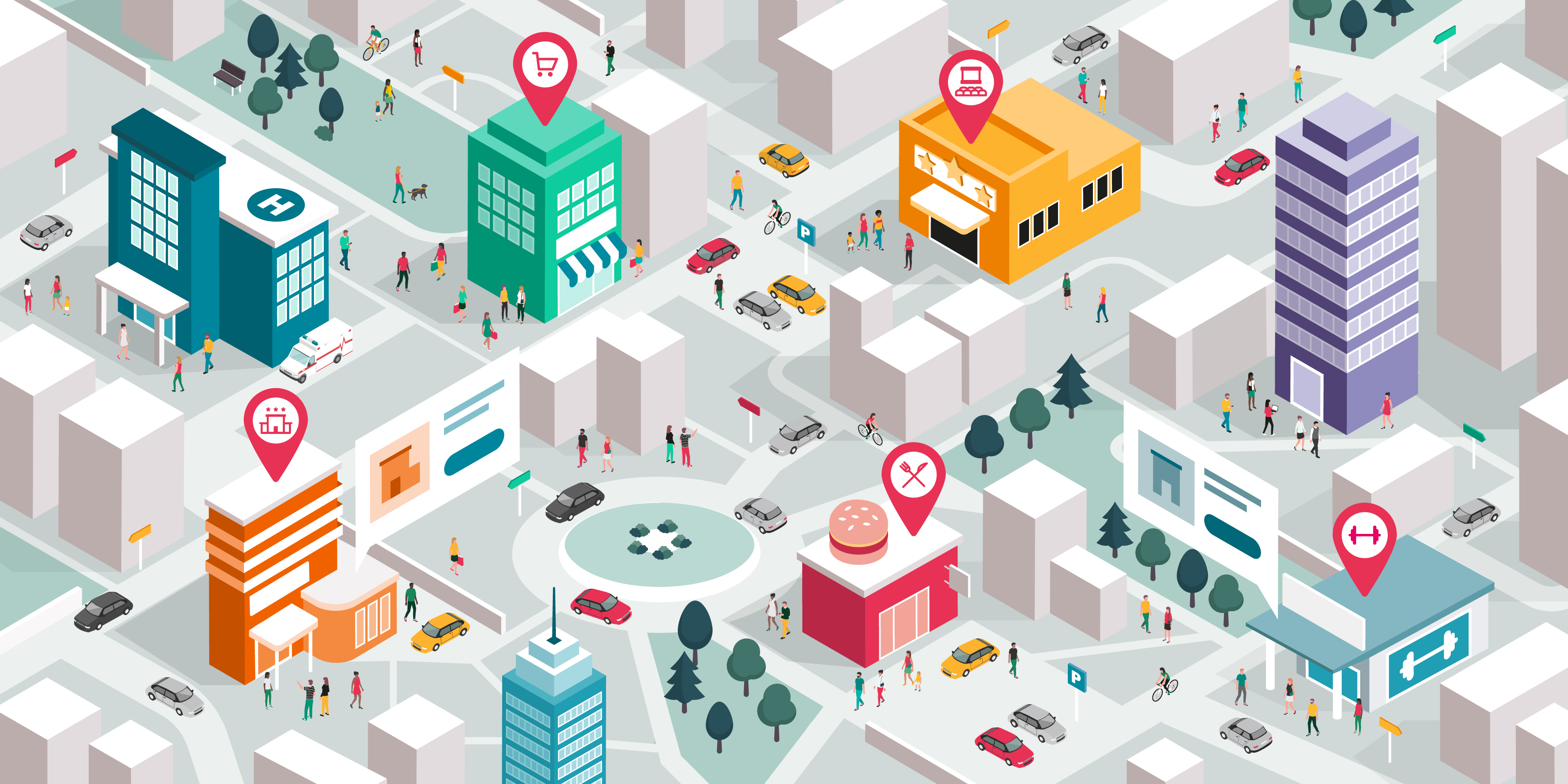
This is part 1 of our two-part series. Here's part 2.
Whether you work in retail, commercial real estate or operate any business with a storefront, you are likely familiar with the concept of a trade area.
A trade area is the geographic area surrounding your business where the majority of your customers and competitors are. Your trade area is an important component in retail site selection (when selecting and evaluating new store sites).
How do you determine a trade area? How do you use that trade area in your decision-making process? Let’s start with how trade areas are used.
The purpose of a trade area
To understand the purpose of a trade area, let’s talk about two other concepts, retail gravitation and distance decay:
- Reilly’s Law of Retail Gravitation (1931) proposed that consumer trips – such as shopping – are driven by convenience and attractiveness. Consumers will drive further distances for a better product, better experience or a better price.
- Distance decay says that the further one needs to travel, the less interaction happens. For our purposes, the further one needs to travel to get to a destination, the less likely that person is to shop there.
Distance decay and retail gravitation explain why we will drive to the grocery store nearest our houses but will also drive past 10 restaurants to get to the one that we wish to dine at. In each case, we are weighing the tradeoff between convenience and attractiveness and making the choice that works best for us.
It is very challenging to predict what consumers will do when provided with an additional choice, such as when a new store is introduced in an area. To understand this complex world, we will often create a model – a simulation or algorithm to run tests that would be too difficult or expensive to run in the real world. Rather than build a store for $5 million to see if it will be successful, you can create a model much quicker and cheaper. A simple model might evaluate whether there are enough nearby consumers to shop a new store. But how does one measure the quantity of consumers? The answer is to use a trade area.
Defining a trade area
If you look at leading restaurant chains’ websites, you might find their retail site criteria listed. It is not uncommon to find a statement such as requires 50,000+ persons within the trade area – without offering any guidance on how that trade area should be defined. Nearly any location on earth would have access to 50,000 persons given unlimited time and distance. In this context, it is implied that the 50,000 persons must be within a reasonable distance. Visitors will rarely drive more than a couple of miles to visit a concept like this, so we can expect that the chain is looking for sites with more than 50,000 persons within, say a 5-min drive time or a 2-mile radius. For this restaurant, there are likely to be many customers that visit from outside of the trade area, but due to our distance decay and retail gravitation laws, the consumers that live, work or shop near the store are typically most important to determining whether a store is successful.
Delineating a trade area
Designing a trade area is as varied as the complexity of a market. Trade areas can be defined by distance or drive time, as discussed above, can be drawn manually around a group of customers or visitors, can vary based on rules and more.
Although not the most accurate, drive times and radii trade areas are often used in models to enforce consistency. In our example above, if the chain has stated that they need 50,000 people within 3 miles of the site or a 5-minute drive, any sites submitted are easily compared to other sites and stores. On the other hand, a manually-drawn trade area relies on the knowledge of the person drawing the trade area and it is not uncommon for individuals to create trade areas that are optimistically large and thus over-represent the number of consumers that might visit the location.
However one decides to delineate a trade area, it is critical that all parties know what a trade area represents. In the example above, we’ll get a much different boundary if the trade area is defined as capturing 66% of a customer base versus a trade area that captures 80%. Although there is no universally acceptable definition of a trade area, a 70 or 75% customer capture is a common rule of thumb. A trade area that is too small – say 50% – may not be large enough to explain the key interactions that involve your store, and a trade area that is too large – say one that captures 90% of your customers – will likely introduce considerable noise into your analysis, where the interactions involving your store are lost amongst all the other activities that are happening far from your store.
And here's Retail Trade Areas part 2, where we talk about the factors that impact a trade area!

